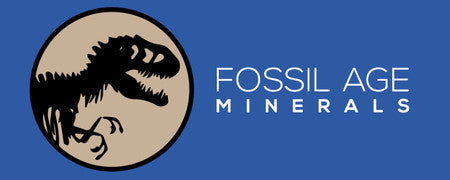News
Everything You Need To Know About Abelisauridae
"Abel's Lizards" named Abelisauridae as Roberto Abel discovered the first genus of the family, full name Abelisaurus comahuensis. They are an important Cretaceous group recognized mainly from Gondwana. Also, comes among the most recent dinosaur group to be discovered, being excavated in the 1980s; it was from the rocks of the Latest Cretaceous (Maastrichtian) age in Argentina. Once Abelisauridae was discovered, after the following decades, Abelisauridae fossil researchers successfully turned the highlight on the other family representatives. They were discovered and reinterpreted in South America and Madagascar, India, north Africa, and France. The group of Abelisauridae consists of a wide...
Learn Some Interesting Facts About Maiasaura Dinosaur Fossils
If the diverse and numerous dinosaurs are extinct, how can we understand how they are inhabited? Even though the dinosaurs are extinct, they have left numerous clues. Dinosaur fossils are not restricted to bones but include skin, eggs, nests, footprints, and other fossils that give us clues about their lifestyles. In 1978 a Maiasaura dinosaur fossils site was discovered near Choteau, U.S. The remnant of an adult Maiasaura was found with a nest of juvenile dinosaurs, each about 1 meter (3.3 feet) long. Quick Facts About Maiasaura Maiasaura was a giant, plant-eating, duckbilled dinosaur. The first Maiasaura dinosaur fossilswere found alongside...
Know Everything About The Diplodocus Dinosaurs
Diplodocus is considered the class of diplodocid sauropod dinosaurs in the group of gigantic dinosaurs that was discovered by S.W. Williston in 1877. However, the generic name was coined by Othniel Charles Marsh in 1878 due to the double-beamed chevron bones located in the underside of the tail that was considered the distinctive attribute that separates them from other dinosaurs. Further, the genus of Diplodocus fossils lived in Mid-western North America at the end of the Jurassic period. After thorough research, we found that the Dinosaurs lived between 154 and 152 million years ago, around the late Kimmeridgian Age. Diplodocus dinosaurs...
Unveil Captivating Facts About The Prehistoric Beast: Chasmosaurus
Chasmosaurus was one of the prehistoric reptiles that roamed North America's plains. It was one of the last big dinosaurs to have evolved before the extinction of these magnificent creatures. The genus Chasmosaurus translates to Chasm Lizard, Dinosaur in reference to the two large holes called fenestrae in its frills. Chasmosaurus fossils belong to the ceratopsian dinosaur that lived between 76.5 and 75.5 million years ago during the Late Cretaceous period. The distinguishing fenestrae are present in almost all ceratopsians but are particularly large in Chasmosaurus. It is referred to as a prehistoric beast because it measured 16-26 feet long from...
Tyrannosaurus's Fall From Grace
Tyrannosaurs were one of the most fearsome and largest carnivores of all time. Tyrannosaurs are part of the theropod family. They lived throughout western North America and Asia. Paleontologists have recently discovered a hip bone belonging to an ancestor of Tyrannosaurus. They found it at Dinosaur Cove in Victoria, Australia. Tyrannosaurs may have lived worldwide, and their remains or skeletons may be discovered in Africa, South America, and India. Tyrannosaurus was present from the beginning to the end of the dinosaur era. These animals actively look for opportunistic scavenging. Early tyrannosaurus was more agile due to its longer legs...







